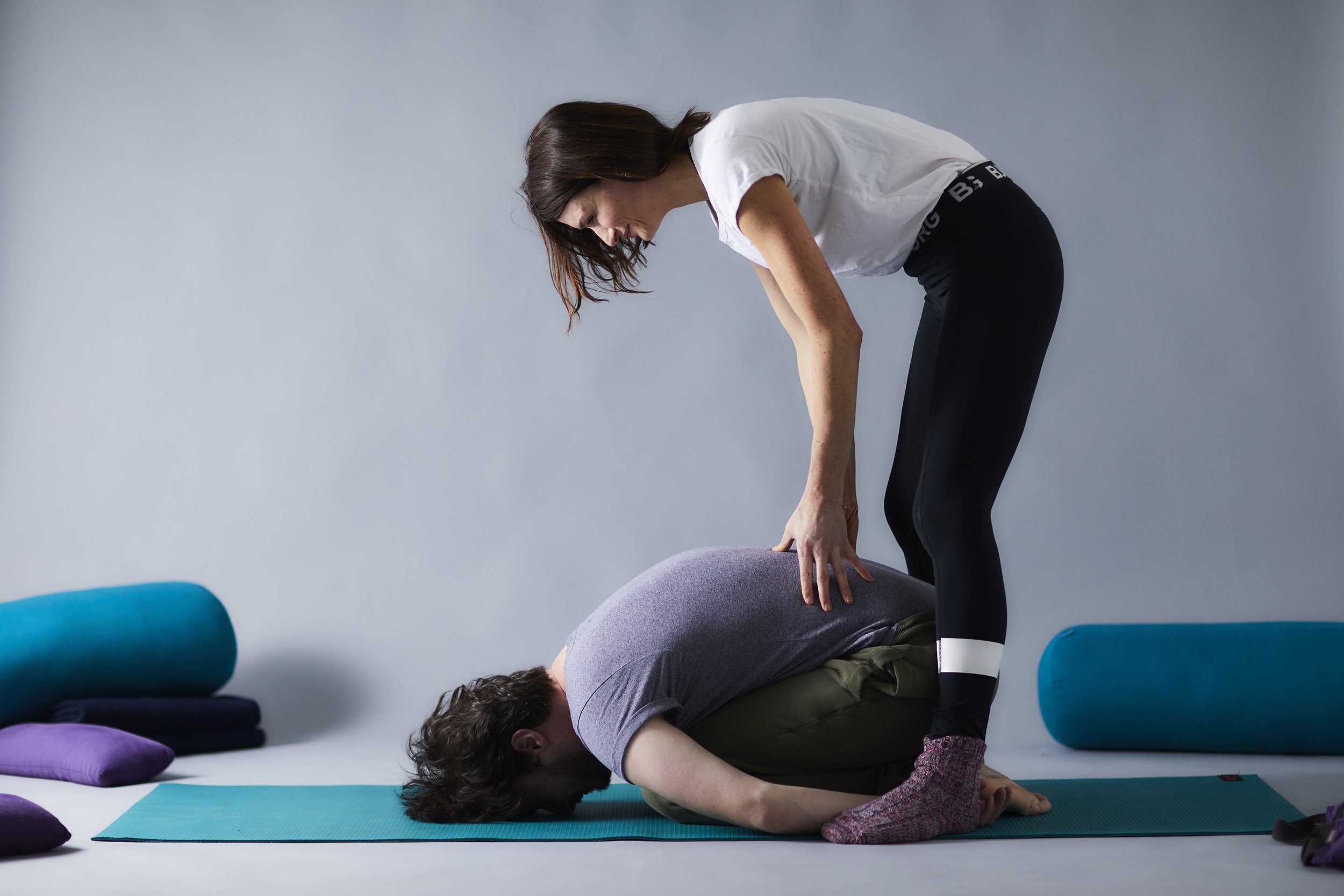Yin Yoga for Back Pain Relief: Unlocking the Healing Potential of Gentle Poses
Back pain is a common ailment that affects people of all ages and lifestyles. For those seeking a gentle yet effective approach to alleviate back pain, Yin Yoga offers a therapeutic and nurturing solution. Unlike more vigorous yoga styles, Yin Yoga focuses on long-held, passive postures that target the deeper connective tissues, promoting flexibility, release of tension, and ultimately providing relief for back discomfort. Let's explore some key Yin Yoga postures and their specific benefits in addressing back pain.
Seal & Sphinx Pose (Bhujangasana Variation):
Sphinx pose with bolster provides pain relief for lower back pain
Sphinx Pose is a gentle backbend that stimulates the spine's natural curvature, providing relief for those with lower back pain. By gently stretching the abdominal muscles, hip flexors, and chest, this pose opens up the front of the body, promoting improved spinal flexibility and reducing compression in the lumbar region.
Seal Pose is a deeper variation of Sphinx Pose that intensifies the stretch in the lower back and spine. It targets the entire backline of the body, from the sacrum to the shoulders, effectively releasing tension and promoting a greater range of motion in the back.
Benefits:
Deeply stretches the entire back, including the spine and sacrum
Opens up the chest and shoulders, improving posture
Provides relief for tightness in the upper and lower back
2. Child's Pose (Balasana):
Child’s pose can help lower back pain
Child's Pose is a restorative and relaxing posture that gently stretches the back and elongates the spine. This comforting pose is especially beneficial for individuals with tightness in the lower back and hips, providing a gentle release and relaxation.
Benefits:
Relieves tension in the lower back, hips, and shoulders
Calms the mind and reduces stress, which can contribute to back pain
Stretches the entire back and elongates the spine
3. Bananasana (Banana Pose):
As you explore the benefits of Bananasana Yin Pose, you'll discover a renewed sense of freedom and relaxation along your spine, promoting better alignment and a greater sense of ease in your body.
Bananasana, also known as Banana Pose, is a gentle and soothing Yin Yoga posture that targets the side body, particularly the muscles along the ribs and waist. This lateral stretch provides a unique release for the back, especially the quadratus lumborum muscles, which can be a source of discomfort for some individuals.
How to Practice Bananasana:
Lie on your back with your legs extended and arms resting alongside your body.
Take a deep inhale and, as you exhale, shift your hips slightly to the right side.
Inhale again and reach your arms overhead to the left, lengthening through the entire left side of your body.
As you exhale, maintain the stretch and keep your right shoulder grounded.
Feel the gentle opening and release along your left side, from the hip to the armpit.
Breathe deeply and hold the posture for 2 to 5 minutes.
To release, inhale and bring your arms back to the sides, then switch sides and repeat the stretch.
Benefits:
Eases tension in the lower back and side waist muscles.
Stretches the intercostal muscles between the ribs, promoting improved breath capacity.
Encourages gentle twisting, which can relieve stiffness in the spine and promote spinal mobility.
By incorporating Bananasana into your Yin Yoga practice, you can complement other back-focused poses, creating a well-rounded and therapeutic experience for your entire back. The lateral stretch of this pose offers a unique way to target and release tension along the side body, supporting overall spinal health and flexibility.
4. Lying Down with Legs Over Bolster (Supta Baddha Konasana Variation):
Lying Down with Legs Over Bolster is a restorative Yin Yoga pose that provides gentle support and deep relaxation to the lower back and hips. This variation of Supta Baddha Konasana allows for a passive stretch in the inner thighs and hip flexors, while the bolster or cushions support the legs and elevate the pelvis, creating space in the lower back.
Benefits:
Relieves tension and discomfort in the lower back and hips
Opens up the hips and stretches the inner thighs
Promotes relaxation and reduces stress, benefiting overall back health
Including this restorative pose in your Yin Yoga practice can be particularly beneficial for individuals with tight hip flexors and lower back pain. By embracing the nurturing support of the bolster, you'll experience a gentle release in the back and hips, encouraging a greater sense of ease and comfort in your body.
Yin Yoga is a gentle and effective practice that targets the deeper layers of connective tissues, providing much-needed relief for back pain. Incorporating Yin Yoga postures like Sphinx Pose, Seal Pose, Child's Pose, Thread the Needle Pose, and Supported Fish Pose into your routine can help alleviate tension, promote flexibility, and improve overall spinal health. As you embrace the therapeutic benefits of Yin Yoga, you'll discover a more balanced and harmonious back, allowing you to move through life with ease and comfort. Remember to practice with patience and mindfulness, allowing your body to fully experience the transformative potential of Yin Yoga.




